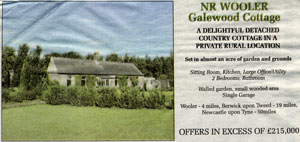

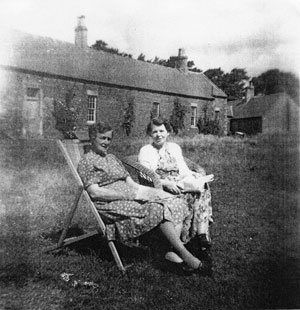
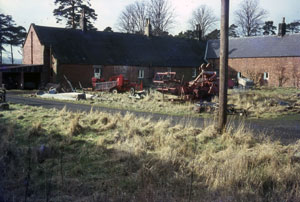
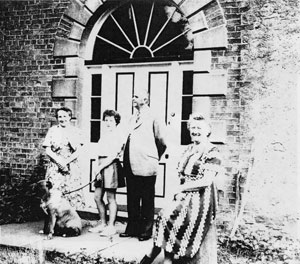
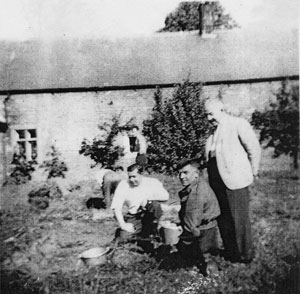
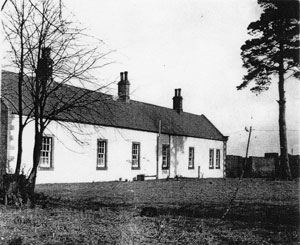



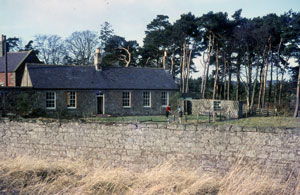
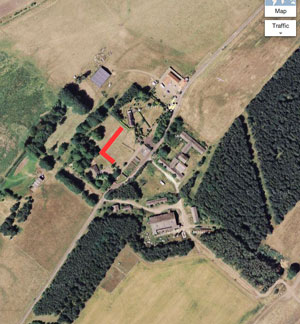
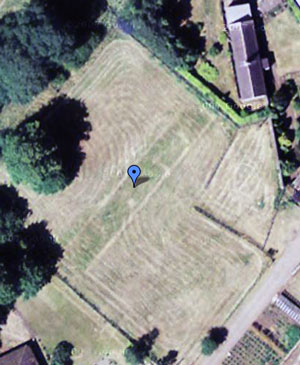
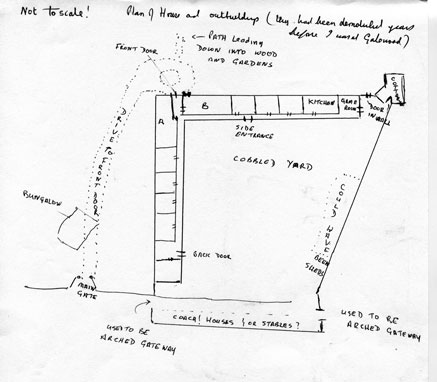
A History of Galewood researched and written by John Grey in 2014.
Galewood has been a part of the Ewart or Eworth (which means land enclosed by water) estate and the name was changed to Ewart in the 13th century. The estate long ago included Akeld and Humbleton and was owned by Ivar the Daem and many Danish or Viking families lived on the estate. In 1269 Simon of Ewart was named in several legal actions to do with land taxes. Early in the 14th century John Cousyn was accused of several offences, one was the abduction of Alice of Ewart but he was pardoned by Edward 1st. Alice later married John, son of Walter Boroughdon and through that the estates of Ewart and Hawkhill were settled jointly between them. The Grey Family took over Ewart during the 1400s through a marriage settlement of Thomas, grandson of Sir Thomas Grey of Horton. In 1541 when the government commissioners surveyed the borders, Ewart was marked as the inheritance of the Greys of Chillingham and it was noted that there was no defences on the estate and so in times of danger the inhabitants had to flee to the tower over at Fenton. From 1696 Ewart was held by the Barony of Wooler which was held by the Greys. In 1733 on Robert Lord Grey's death Ewart was bought by John Collins who was brother-in-law to Robert St Paul who later inherited Ewart on John Collins death in 1753.
On an old map of Ewart estate in 1757, Galewood is marked as a marsh, not as a farm but also Ewart Newton (another farm) is not marked, yet in other papers they are numbered among the farms on the estate. Prior to this, possibly in the 1700s, Humbleton and part of Akeld were sold. The St Pauls lived in the manor house at Ewart. Records show that Horace St Paul worried about the burying ground, wondering if it was consecrated, and was also keen to construct a building to be used for services for his estate workers. From 1760 a building known as the Farmers Hall was used for short services on Sunday evening, this custom continued till after the First World War.
The manor house, or the farmhouse must date back to the 1600s or earlier, as Galewood was regarded as a farm. When the Count St Paul died in 1812 he left three sons, Horace, Henry and Charles, also a daughter. The sons all served in the Army, on their release Horace moved to Ewart Manor while Charles moved to Galewood where he bred race horses but also formed the Galewood pack of hounds of which he was the Master from 1833 to 1838. Charles died later that year and in 1839 the Thirling's and Galewood were let to the Earl of Durham, who over the next few years enlarged both houses and also created the gardens. In 1867 Sir Horace St Paul married Jane Eliza Grey, they had one child Maria who in 1893 married George Grey Butler who was son of George Butler Canon of Winchester and Josephine who was first cousin of George Grey. After her husband's death Josephine moved to Galewood mansion staying there until 1903/4 when she moved to Wooler where she died in 1906. The Ewart Estate was owned by the Butler family till the 1920s when it was sold to Redehaugh but Galewood was not included in the sale so it could have been sold earlier.
A marsh or bog, mentioned on a map of the estate in 1757, covered some thirty acres. There were attempts to drain the area shortly after the First World War. In those days all drainage pipes were short clay ones, but when draining really wet land, as the land dried out the pipes became displaced as they sank which resulted in the land going back to bog conditions. However at Galewood to combat this, the pipes were laid on lengths of oak which worked for a few years till eventually the land reverted back to bog. After Josephine Butler moved to Wooler, I believe a Butler lived in Galewood House, possibly a brother of the one living at Ewart, as the Butlers still owned the estate. The last children born at Ewart House were Horace and Heather and I know as children they used to stay with their uncle at Galewood. He had a stone pan tiled roofed barn built to hold a byre for the jersey cow and a stall for the pony that pulled the trap that brought Heather over from Ewart House. The jersey cow provided milk for Heather as she was weak as a child.
When Ewart was sold in the 1920s to the Redehoughs, they lived at Thirlings, because of the great costs of repairing the mansion. Their descendants continued to live at Thirlings and Ewart became a ruin. When the Second World War started the land to the north of Galewood was levelled and turned into an airfield and used by the RAF as a training station. Whoever owned Galewood offered the mansion as an officers mess. By this time several buildings connected to the airfield had been erected on the Ewart land bordering Galewood, one of which was the NAAFI theatre, where during the war, many shows were put on by the service men and women, some who in later years made their name, one being Dirk Bogard.
After the war Galewood mansion was rented till it, and the 94 acres of land, was sold to Mr Griffiths, who let his sister with her husband, who had been injured during the war, along with their son run Galewood. To start with the family lived in the mansion but the upkeep proved too costly so they moved to the cottage. In 1965 Mr Griffiths sold Galewood to Norman Grey and his son John. On inspection the mansion was found to be full of wood beetle, dry and wet rot and any ideas of repairing and altering part of the house and demolishing the rest were dismissed as the costs were exorbitant. Sadly Norman Grey died soon after they bought the farm. In 1966 after various builders’ estimates John and his mother decided to demolish the mansion and to build a bungalow in the front garden of the old house, on the drive that had led to the front door.
Over the next few years many changes took place on the land at Galewood; apart from the bungalow being built, the cottage which dated back to the 1700s was altered, also the few existing farm buildings were altered and some new large sheds erected. But the biggest improvement was the draining of the bog and turning what had been wet and wasted land into some highly productive land, making Galewood a farm which was much admired in the district.
During the 1970s teams of archaeologists visited Ewart and Galewood. They knew that stone coffins believed to be Saxon had been brought down from the Saxon Palace on the Yeavering having been found in the early 1920s. On Ewart land bordering Galewood they found a Bronze Age settlement, which proved that habitation had been in this area long before the Greys and Butlers arrived.
In 1980 the British Gas arrived and by compulsory purchase took over half of the Galewood land on the west side. With losing so much land John Grey decided to sell the rest and move. The gliding club who had used the old airfield were desperate for land as gravel extraction was taking up much of the old airfield. The gliding club removed all the fences on Galewood and now had a long grassy stretch that ran over what used to be the bog.
Many years later John visited Galewood and received many shocks. He had been told that the gliding club had moved back to the old airfield and had sold the land to British Gas, who sold the bungalow with some land but also had sold what used to be a walled off area that had been used as cattle yards and silage pits, but now two new houses had been built. But the biggest shock was seeing the land he had drained had reverted back to bog due to the Gas workers severing the drainage pipes. So now Galewood is reverting back to the days of that map drawn in 1757 with a marsh and a cluster of buildings. One cannot but wonder what Galewood will look like in another three hundred years.
